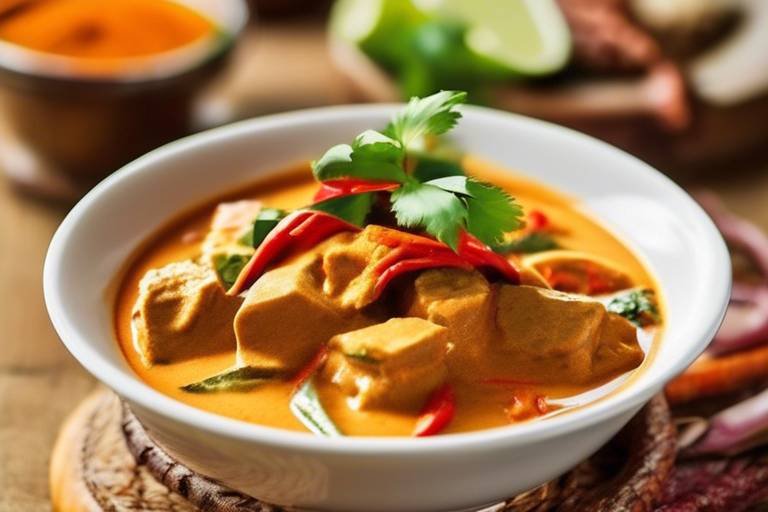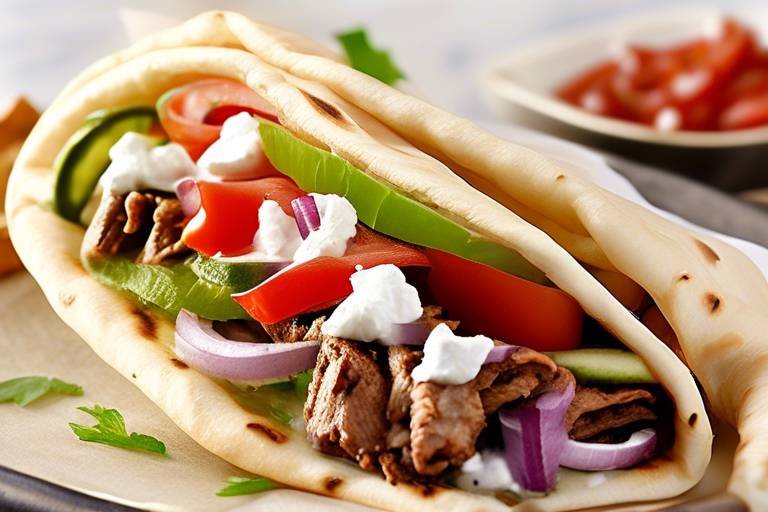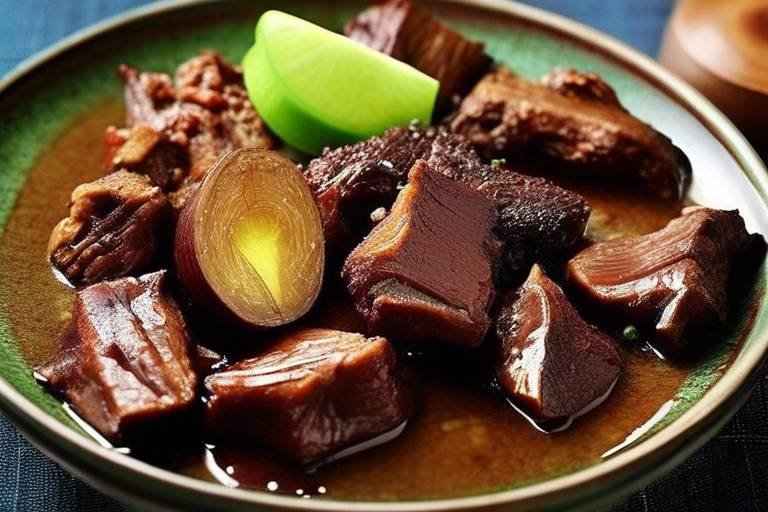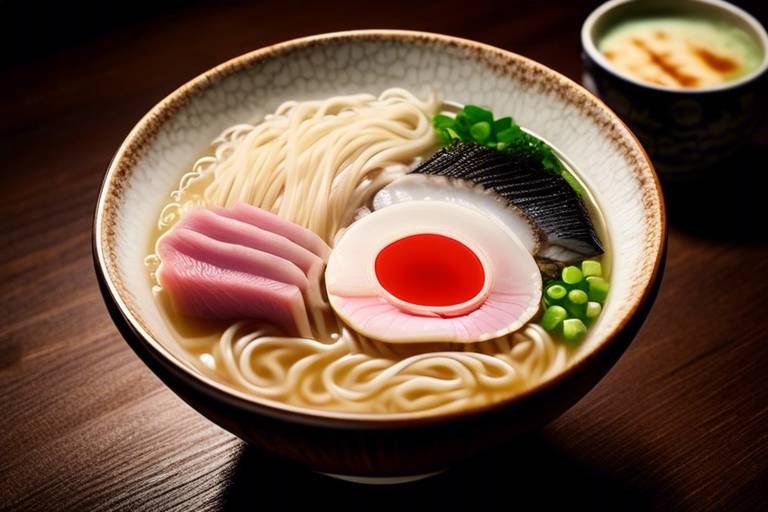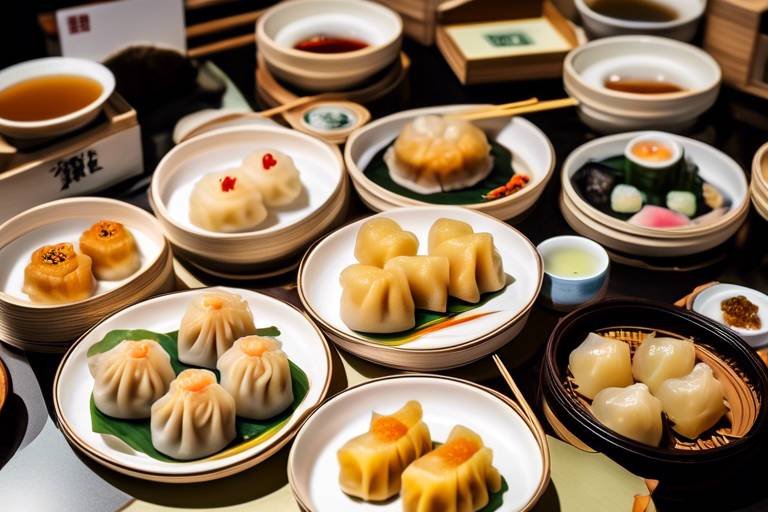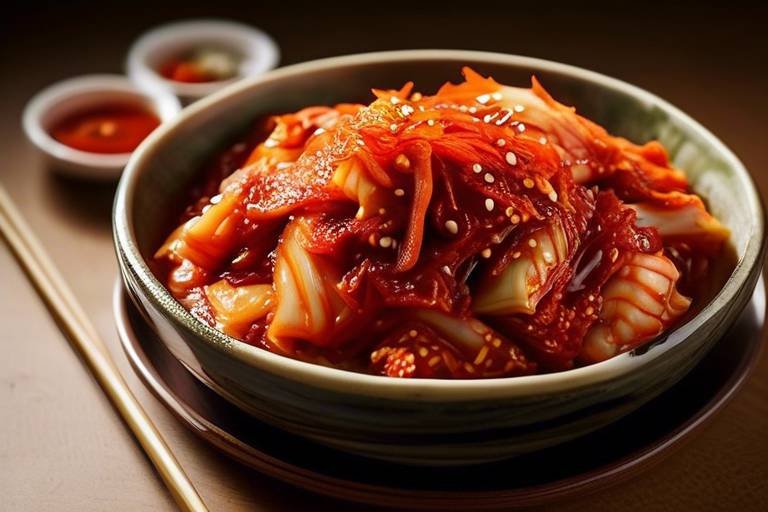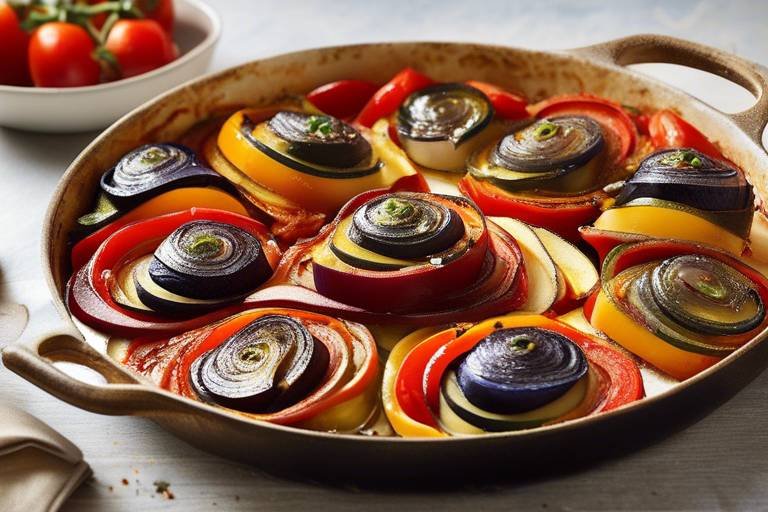The Ultimate Guide to Traditional Polish Pierogi
Polish pierogi, a beloved dish with a rich history and deep cultural roots, hold a special place in the hearts and stomachs of many. These delectable dumplings are more than just a meal; they are a symbol of tradition and togetherness in Polish cuisine. In this ultimate guide, we will delve into the origins, fillings, dough recipe, making process, toppings, serving suggestions, cultural significance, and modern twists of traditional Polish pierogi.

History of Pierogi in Poland
Pierogi, the beloved dumplings of Poland, have a rich and fascinating history that dates back centuries. These delightful pockets of dough filled with various ingredients hold a special place in Polish cuisine and culture. The origins of pierogi in Poland can be traced back to the Middle Ages, where they were initially considered a peasant food due to their simple and affordable ingredients.
Over time, pierogi gained popularity across all social classes in Poland and became a staple dish in households and restaurants alike. The dish evolved as different regions in Poland put their own unique twist on the fillings and preparation methods, resulting in a diverse range of pierogi variations.
The cultural significance of pierogi in Poland goes beyond just being a delicious meal. Pierogi are often served during important occasions such as holidays, weddings, and family gatherings, symbolizing unity and togetherness. They have become a symbol of Polish culinary heritage, cherished by generations and passed down through families.
Throughout history, pierogi have adapted to reflect the changing times and tastes of the Polish people. While traditional fillings like potato and cheese remain popular, modern twists on pierogi have emerged, featuring innovative ingredients and cooking techniques. Chefs are constantly experimenting with new flavors and presentations, keeping the tradition of pierogi alive and exciting.
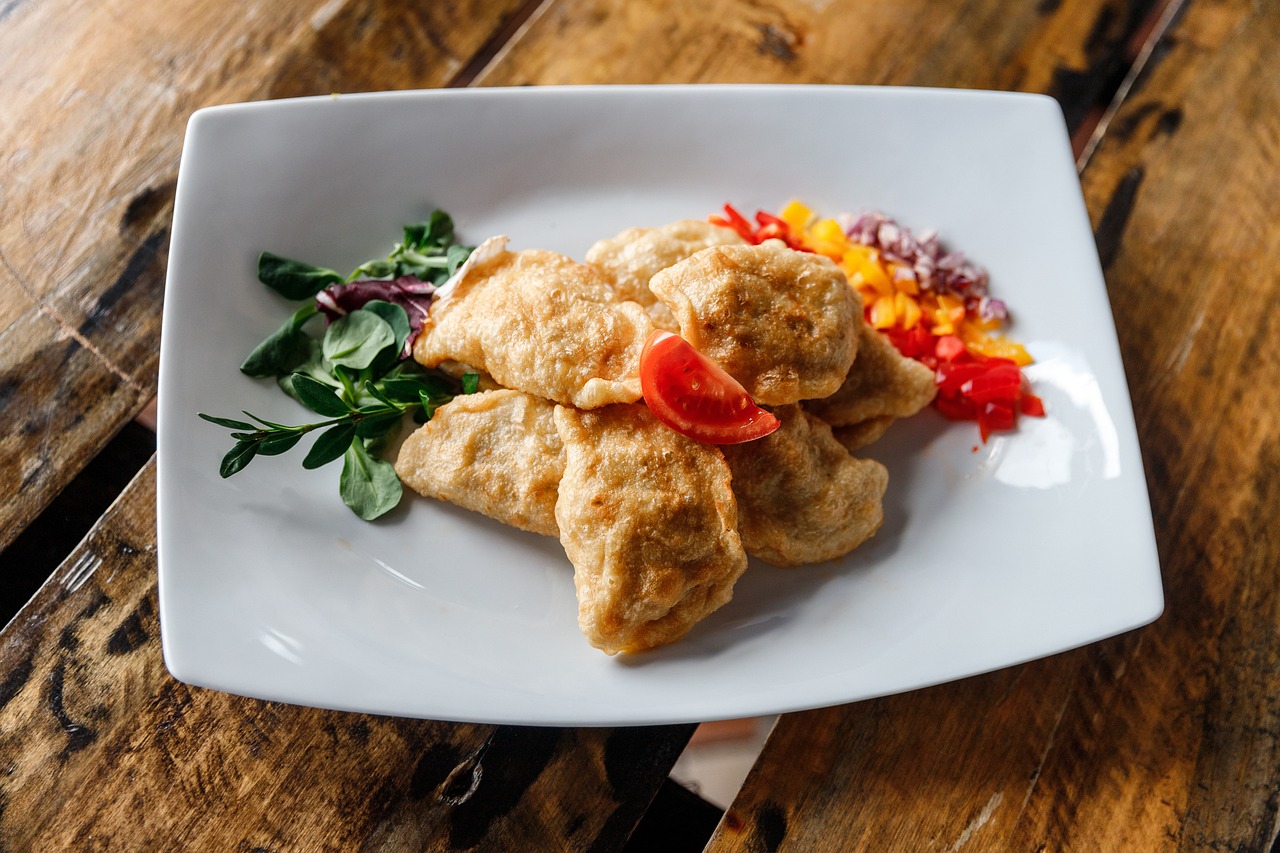
Types of Pierogi Fillings
When it comes to traditional Polish pierogi, the fillings play a crucial role in defining the flavor profile of this beloved dish. From classic combinations to unique regional variations, there is a wide range of pierogi fillings to explore.
One of the most iconic and popular pierogi fillings is the classic potato and cheese mixture. This creamy and savory filling is a staple in Polish cuisine, providing a comforting and satisfying taste that appeals to many. The smooth texture of the mashed potatoes combined with the tangy cheese creates a perfect balance of flavors.
For those with a sweet tooth, there are also fruit-filled pierogi options to enjoy. Fillings such as blueberry, strawberry, or cherry offer a delightful burst of sweetness in every bite. These fruity pierogi are often served as a dessert or a sweet treat during special occasions.
Additionally, meat fillings like ground pork or beef are popular choices for those looking for a heartier and more substantial pierogi experience. The rich and savory flavors of the meat filling pair well with the tender dough, creating a satisfying meal that is sure to please.
Regional variations of pierogi fillings can also be found across Poland, each showcasing unique ingredients and flavors specific to the area. From mushroom and sauerkraut fillings in the eastern regions to spinach and feta cheese fillings in the southern parts, these regional pierogi offer a diverse culinary experience.
Moreover, modern twists on traditional pierogi fillings have emerged in recent years, incorporating innovative ingredients and flavor combinations. Chefs are experimenting with fusion fillings like pulled pork and BBQ sauce or goat cheese and caramelized onions, pushing the boundaries of traditional pierogi fillings.
Whether you prefer the classic potato and cheese filling or enjoy exploring new and creative combinations, the variety of pierogi fillings available ensures that there is a flavor to suit every palate.
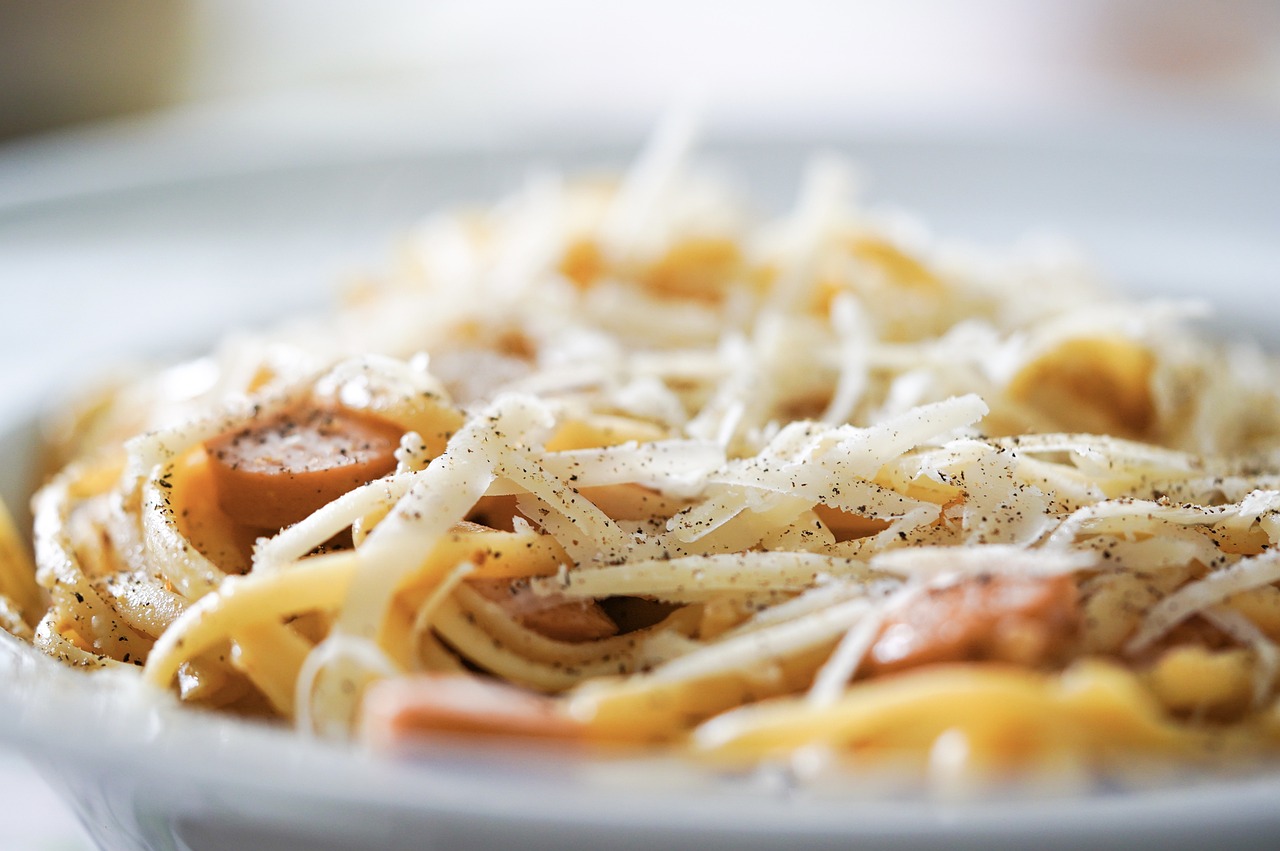
Traditional Pierogi Dough Recipe
When it comes to traditional Polish pierogi, the dough is the foundation that holds all the delicious fillings together. The is a crucial element in creating the perfect dumplings that are both tender and sturdy. This recipe has been passed down through generations, ensuring an authentic taste that captures the essence of Polish cuisine.
The key to making the traditional pierogi dough lies in the simplicity of the ingredients. A combination of flour, water, egg, and a pinch of salt is all you need to create a dough that is easy to work with and yields tender pierogi. The dough should be smooth and elastic, allowing for easy rolling and shaping without being too sticky.
To begin, sift the flour into a large mixing bowl and make a well in the center. Crack the egg into the well and add a bit of water to start binding the ingredients together. Slowly incorporate the flour into the wet ingredients, kneading the dough until it forms a smooth ball. Let the dough rest for about 30 minutes to allow the gluten to relax and the flavors to meld.
Once the dough has rested, it is ready to be rolled out and filled with your desired pierogi filling. The thickness of the dough is crucial - too thin, and the pierogi may burst during cooking; too thick, and they may be doughy. Aim for a thickness that allows the dough to stretch slightly without tearing when filled and shaped.
When cutting out the dough circles for the pierogi, make sure to use a round cutter or a glass with a smooth edge to create uniform shapes. Place a small amount of filling in the center of each circle, fold the dough over, and press the edges firmly to seal. The pierogi can be shaped into traditional half-moon dumplings or folded into a more intricate design, depending on personal preference.
Overall, mastering the traditional pierogi dough recipe is a rewarding experience that allows you to create homemade dumplings that are both delicious and comforting. The dough serves as the canvas for a myriad of fillings, from savory to sweet, making it a versatile and beloved staple in Polish cuisine.

Step-by-Step Pierogi Making Process
Are you ready to embark on a culinary adventure and master the art of making traditional Polish pierogi from scratch? Let's dive into the step-by-step pierogi making process that will have you creating delicious dumplings in no time!
First, prepare the pierogi dough using a traditional Polish recipe. Combine flour, water, eggs, and a pinch of salt in a mixing bowl. Knead the dough until it is smooth and elastic, then let it rest for about 30 minutes to allow the gluten to relax.
Next, roll out the dough on a floured surface until it is thin and uniform in thickness. Use a round cutter or a glass to cut out circles of dough for the pierogi wrappers. Make sure to reroll any scraps to minimize waste.
Now comes the filling! Spoon a small amount of your desired filling, such as potato and cheese or savory meat, onto each dough circle. Be careful not to overfill to prevent the pierogi from bursting during cooking.
Once the filling is in place, fold the dough over the filling to create a half-moon shape. Press the edges firmly to seal the pierogi, ensuring no filling leaks out during cooking. You can crimp the edges with a fork for a decorative touch.
Boil a large pot of salted water and carefully drop the pierogi in batches. Cook them until they float to the surface, indicating they are ready. Remove with a slotted spoon and transfer to a plate.
For a delightful finishing touch, sauté the cooked pierogi in butter until they are lightly browned and crispy on the outside. Serve hot with your favorite toppings and garnishes for a truly authentic Polish dining experience!

Popular Pierogi Toppings and Garnishes
When it comes to traditional Polish pierogi, the toppings and garnishes play a crucial role in enhancing the overall flavor profile of this beloved dish. From simple yet classic options to more indulgent choices, there is a wide array of popular pierogi toppings and garnishes that cater to different preferences.
One of the most traditional and widely loved toppings for pierogi is crispy bacon bits. The salty and savory flavor of the bacon adds a delicious contrast to the soft and pillowy dumplings. The crispy texture also provides a satisfying crunch with every bite, creating a delightful sensory experience.
Another popular choice is caramelized onions, which bring a sweet and savory element to the pierogi. The slow cooking process of caramelizing onions enhances their natural sweetness and imparts a rich, deep flavor that pairs beautifully with the mildness of the potato or cheese filling.
For those looking to add a touch of freshness and brightness to their pierogi, a dollop of sour cream is a classic garnish. The cool and tangy creaminess of sour cream helps balance out the richness of the dumplings, creating a harmonious combination of flavors.
If you prefer a bit of heat and spice, chopped fresh chives or a sprinkle of red pepper flakes can be excellent choices for topping your pierogi. These additions not only add a pop of color but also provide a flavorful kick that elevates the overall taste profile of the dish.
For a more indulgent twist, melted butter drizzled over the pierogi can create a decadent finish. The buttery richness adds a luxurious touch to the dumplings, making them even more satisfying and indulgent to enjoy.
Whether you prefer traditional toppings or enjoy experimenting with new flavors, the options for enhancing your pierogi are endless. By exploring different combinations of toppings and garnishes, you can customize your pierogi experience to suit your taste preferences and create a truly memorable dining experience.

Serving and Enjoying Pierogi
When it comes to serving and enjoying traditional Polish pierogi, there are a few key tips to ensure a delightful dining experience. The beauty of pierogi lies not only in their taste but also in the way they are presented and paired with complementary flavors. To start, consider serving pierogi piping hot, straight from the pot or pan. The heat enhances the flavors and textures, making each bite a savory delight.
Pairing pierogi with the right accompaniments can elevate the experience. Traditional Polish pierogi are often served with a dollop of sour cream, which adds a creamy richness to the dish. Additionally, a sprinkle of fresh herbs like chives or parsley can provide a burst of freshness that balances the richness of the dumplings.
For those looking to add a bit of crunch and depth of flavor, consider topping your pierogi with crispy bacon bits or fried onions. These toppings not only add texture but also bring a savory element that complements the soft and pillowy pierogi.
When it comes to beverages, pierogi pair well with a variety of options. A refreshing Polish beer or a chilled glass of buttermilk can be the perfect accompaniment to these hearty dumplings. The contrast between the creamy pierogi and the crisp, bubbly beer creates a harmonious balance of flavors.
Lastly, don't forget about presentation. Plating your pierogi with care and attention to detail can make the dining experience even more enjoyable. Arrange the dumplings neatly on a plate, garnish with a sprinkle of herbs, and drizzle with a touch of melted butter for a visually appealing dish that is as pleasing to the eyes as it is to the taste buds.

Pierogi in Polish Culture
Pierogi holds a special place in Polish culture, deeply rooted in the country's culinary heritage and traditions. These delicious dumplings are more than just a dish; they are a symbol of togetherness, celebration, and love shared among families and friends. In Poland, pierogi are not just food; they are a cultural icon, present in various festivals, holidays, and everyday meals.
During important occasions like Christmas Eve dinner or Easter celebrations, pierogi are a must-have dish on the table, bringing people together and creating a sense of unity. The act of making pierogi is often a communal activity, with multiple generations coming together to prepare and enjoy these delectable treats.
Moreover, pierogi play a significant role in Polish hospitality, symbolizing warmth and generosity. When guests visit a Polish household, they are often greeted with a plate of freshly made pierogi, showcasing the host's care and effort to provide a delicious meal.
Additionally, pierogi have become a staple in Polish cuisine, adapting to modern tastes while still preserving their traditional essence. Whether served at a family gathering or a local restaurant, pierogi continue to evoke feelings of comfort and nostalgia, reminding people of the rich cultural heritage they represent.

Modern Twists on Traditional Pierogi
When it comes to traditional Polish pierogi, there is a world of possibilities for modern twists and creative interpretations. Chefs and home cooks alike have been experimenting with new fillings, cooking methods, and presentations to give this classic dish a contemporary flair.
One popular modern twist is the fusion of traditional pierogi fillings with ingredients from other cuisines. Imagine pierogi filled with spicy Mexican chorizo and gooey cheese, or Asian-inspired fillings like teriyaki chicken and ginger-infused vegetables. These innovative combinations bring a whole new level of excitement to the humble pierogi.
Not only are chefs getting creative with fillings, but they are also exploring new ways to cook pierogi. Instead of the traditional boiling and pan-frying methods, some are baking or even grilling pierogi to add a different texture and flavor profile. These alternative cooking techniques offer a fresh take on the beloved dumplings.
Furthermore, modern interpretations of pierogi often involve unique presentations and serving styles. Chefs are experimenting with different shapes and sizes, turning the once familiar dumplings into works of art on the plate. Garnishes and sauces are also getting a modern makeover, with drizzles of balsamic reduction or sprinkles of microgreens adding a touch of elegance to the dish.
Overall, the modern twists on traditional Polish pierogi showcase the versatility and adaptability of this beloved dish. Whether you're a purist who enjoys the classic potato and cheese filling or an adventurous foodie looking to push the boundaries, there's a modern pierogi creation out there waiting to surprise and delight your taste buds.
Frequently Asked Questions
- What is the origin of traditional Polish pierogi?
The origins of pierogi can be traced back to Poland, where they have been a staple of the cuisine for centuries. The dish has evolved over time, influenced by various cultural and culinary traditions.
- What are the most common fillings used in traditional Polish pierogi?
Classic fillings for traditional Polish pierogi include potato and cheese, as well as a variety of meat and vegetable options. Regional variations may feature unique fillings specific to certain areas of Poland.
- How do you make the perfect pierogi dough?
Mastering the art of pierogi dough involves using key ingredients such as flour, water, and sometimes eggs. The dough should be rolled out to a specific thickness and then filled and shaped before cooking.
- What are some popular toppings and garnishes for traditional Polish pierogi?
Popular toppings for pierogi include crispy bacon bits, caramelized onions, sour cream, and fresh herbs. These additions enhance the flavor of the dumplings and add a delicious finishing touch.
- How are traditional Polish pierogi typically served?
Traditional Polish pierogi are often served boiled or fried, accompanied by sour cream, melted butter, or fried onions. They can be enjoyed as a main dish or as a side, depending on personal preference.
- Are there any modern twists on traditional Polish pierogi?
Chefs have been experimenting with creative variations of pierogi, incorporating fusion fillings like spinach and feta or lobster and truffle. Modern interpretations may also involve innovative cooking methods such as baking or air frying.


